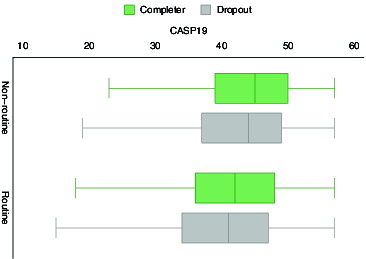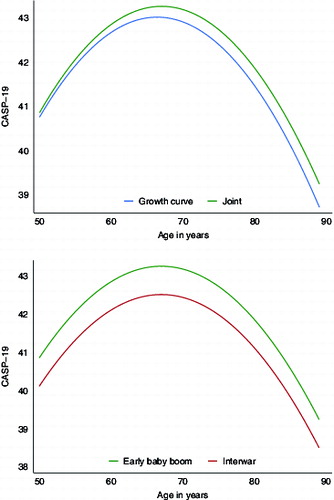Figures & data
Table 1. Description of baseline sample ELSA wave 1.
Table 2. Trajectories of CASP-19 in England 2002–2010.
Table 3. Top panel: the peaks of the third age when attrition is assumed random in growth model versus when attrition in jointly modelled; bottom panel: the level-difference across cohorts in CASP-19, reference is the baby boomers cohort, based on the joint model.


